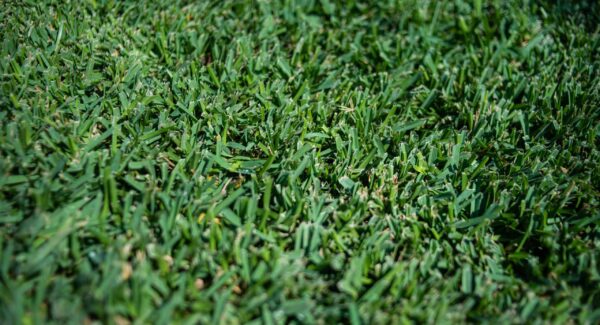Creating a Pet-Safe Yard

Unfortunately, many of the products that are beneficial for grass health aren’t so great for curious pets. Want to see your grass thriving while also keeping your pets healthy? Follow these parameters for using lawn and garden products in a way that keeps your dog or cat safe.
Plants
Colorful flowers and plants make your yard look beautiful and varied, but unfortunately some are toxic for pets, including common plants like easter lilies, irises, and even apple trees. It’s also important to be mindful of these toxins if you decorate your home with potted plants or flowers in a vase (cats are known to jump on the table to eat your flowers!). To best safeguard your four-legged family members, check out this list of poisonous plants for pets compiled by the Humane Society.
Mulch
When it comes to safe mulches for pets, natural material is almost always best. Shredded pine or cedar mulches work well, as do stone and rock mulches. Try to find mulches that do not contain resins, insecticides, herbicides, or fertilizers, as these can be poisonous for your animals. Another important point: many homeowners have started using cocoa bean shells in their landscaping because of their pleasant color and scent. However, because they are a by-product of chocolate production, they are very dangerous for dogs. Cocoa can cause indigestion, vomiting, muscle tremors, and seizures in canine, so this is definitely a mulch to steer clear of if you’re a dog owner.
Fertilizer
Fertilizers can be incredibly effective for keeping your lawn lush and green, but they can be upsetting for your pets’ tummies. Fertilizers are often attractive to animals because they can include bone meal and poultry manure. In fact, calls regarding fertilizer are one of the top 10 most common for the Animal Poison Control Center hotline.
If you’re using liquid fertilizer, don’t let your pet on a treated lawn until the grass blades are dry to the touch. For granular fertilizer, you should typically wait a full 24 hours (48 if you want to be extra cautious) before letting your pet on the grass. If you have both a front yard and backyard, it helps to fertilize them on different days so your pet always has a safe place to go. Otherwise, you can take your dog for walks until the yard is clear. If your pet does go outside, be sure to wipe its paws when it comes back in. It’s not that the chemicals will be absorbed through their paws, it’s that animals have a tendency to lick their paws clean, which becomes dangerous if there are gardening chemicals on them.
Insecticides
Over 50% of calls to the Animal Poison Control Center regarding cat health pertain to cats being exposed to insecticides. Although these chemicals are usually excellent in helping you achieve healthy grass, their ingredients aren’t as excellent for your pets. Read the manufacturer’s directions for proper storage and keep them somewhere pets can’t reach them.





